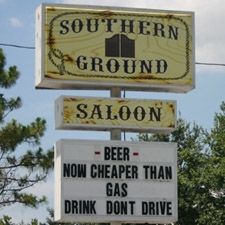PORTLAND, OR (BRAIN)—Perhaps consumers have become desensitized in light of record prices at the pump only three years ago. Or perhaps the economy is doing better, giving people more confidence in their buying habits.
Whatever the case may be, it seems that gas prices haven’t reached the illusive tipping point to produce a red alert (or green alert) in most people’s minds, where they look to the bike for financial relief.
“I wouldn’t say we have” seen more people buy commuter bikes as a result of higher gas prices, said Bill Larson, owner of Cyclepath, located in Portland, Oregon.
With that said, Larson said the shop’s commuter lineup of high-end options, ranging from $1,500 - $3,500, have been the strongest category for the shop. “I think people are willing to put more money into their commuter bikes,” Larson said. He’s seen this trend unfold over the past couple of years.
As oil prices hit $113 a barrel yesterday Libyan rebels told news outlets that they won’t produce crude for at least a month as they repair fields damaged in fighting. That means even higher gas prices in the United States, as the $5 mark looms on summer’s horizon in certain parts of the country.
Budget Bicycle Center in Madison, Wisconsin, also has a strong commuter business, but store manager Darin Schulz hasn’t seen an uptick in commuter sales because of rising gas prices.
“The weather hasn’t been that good here,” Schulz said. “Ask me again in about a month.”
Schulz said higher gas prices might not be a blessing in disguise for Budget Bicycle Center. While his commuter sales might increase, Schulz said he fears that many families will decide to ditch that northern Wisconsin bike vacation. “I’ll have to make that up somewhere,” he added.
The NPD Group, a market research company, said that consumers have cut back on their gas purchases from a year ago, which means they are driving less. Gallons purchased are down 1.2 percent.
"If the current uptick in gas price is sustained, we can expect consumers to begin implementing some key changes like reducing or consolidating shopping trips, taking more mass transit, and carpooling," said David Portalatin, industry analyst for NPD's automotive aftermarket business. "In the case of a prolonged spike above $4, we'd expect even more significant changes like working from home, relocating or changing jobs, or driving a more fuel-efficient vehicle."
Based on recent history in 2008 when gas reached a high of $4.16-a-gallon, NPD research shows that drivers made significant changes in driving behavior including 49 percent who reduced or consolidated shopping trips, 29 percent cancelled or modified vacations, and 25 percent found alternate means of transportation including mass transit, carpooling, and riding a bike.
"It comes down to the simple economics of share of wallet," Portalatin said. "Most consumers have limitations in their budgets. If they are spending more on gas, they either need to cut down on their driving or spend less on other things. History has told us they begin by cutting down on their driving."
—Jason Norman
jnorman@bicycleretailer.com




